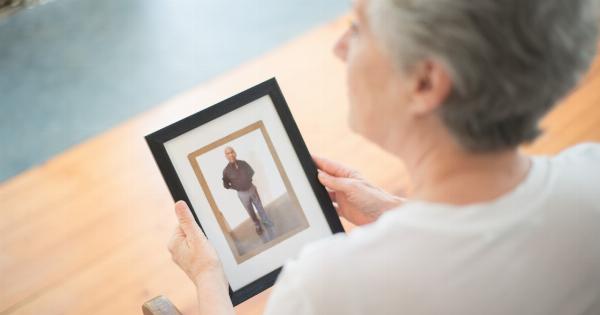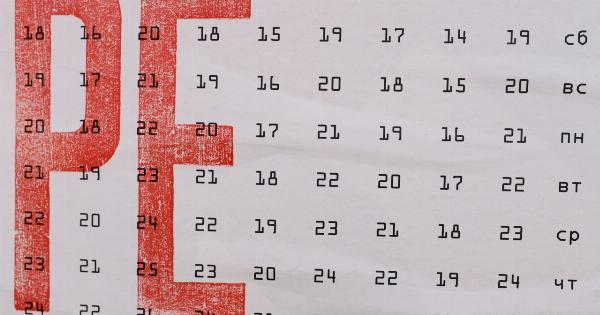Emotions play a significant role in our lives. They shape our behaviors, decisions, and overall mental well-being. While emotions are primarily associated with our mental state, they can also have a profound impact on our physical well-being.
One intriguing phenomenon is the experience of physical pain when we are upset or emotionally distressed. This article will delve into the reasons behind this intriguing connection and explore the various mechanisms at play.
The Mind-Body Connection
The mind and body are intricately connected, and our emotions can affect our physical well-being to a great extent. Our thoughts and feelings can manifest in various bodily sensations, including pain.
This phenomenon highlights the understanding that emotional health and physical health are interdependent, and treating one often involves addressing the other.
The Role of Stress
Stress is one of the primary contributors to the experience of physical pain during emotional distress. When we feel stressed or overwhelmed, our bodies enter a state of physiological arousal.
This arousal triggers the release of stress hormones like cortisol and adrenaline, preparing our bodies for the “fight or flight” response.
However, these stress hormones can also sensitize our nervous system, making us more susceptible to pain. Under stress, our pain threshold lowers, intensifying any existing physical discomfort.
This lowered pain threshold can result in the amplification of pain signals, leading to a heightened experience of physical pain.
The Impact of Negative Emotions
Negative emotions, such as sadness, anger, and fear, can exacerbate physical pain. These emotions activate certain regions of the brain that modulate pain perception, such as the amygdala and anterior cingulate cortex.
The amygdala, known for its role in processing emotions, can amplify pain signals, intensifying our perception of pain.
Furthermore, negative emotions can lead to muscle tension. When we are upset, we often hold tension in our muscles, leading to stiffness, headaches, and even migraines.
This physical tension can contribute to an increase in pain sensation and make it more challenging for us to cope with emotional distress.
The Role of Neurotransmitters
Neurotransmitters, chemicals in our brain responsible for transmitting signals between nerve cells, also play a role in the experience of pain during emotional distress.
Two key neurotransmitters involved in this process are serotonin and norepinephrine.
Serotonin, often referred to as the “happy hormone,” directly influences our mood and emotions. Low levels of serotonin have been linked to conditions such as depression and anxiety, which can heighten pain sensitivity.
Norepinephrine, a stress hormone, can increase nerve sensitivity and amplify pain signals, further contributing to physical discomfort during times of emotional distress.
The Psychological Component
Our perception of pain is highly influenced by psychological factors. When we experience emotional distress, our attention becomes focused on our pain sensations, making them seem more intense and enduring.
This heightened attention amplifies the overall experience of physical pain.
Additionally, individuals who are more prone to negative emotions may have a lower pain tolerance due to the way they process and regulate emotions.
These individuals are more likely to catastrophize, meaning they magnify the significance of pain and anticipate even greater pain in the future. This cognitive distortion can contribute to increased pain sensitivity.
The Influence of Past Experiences
Past experiences shape our response to emotional distress and physical pain. Traumatic events or previous instances of pain can create neural pathways that link emotional and physical sensations together.
When similar situations arise in the future, these neural connections can be triggered, leading to the experience of physical pain alongside emotional upset.
Coping Strategies
Understanding the connection between emotional distress and physical pain allows us to adopt effective coping strategies. While each individual may find different techniques helpful, some common approaches include:.
1. Mind-Body Techniques: Practices such as deep breathing, meditation, and yoga can help regulate both emotions and physical sensations, reducing pain during times of distress.
2. Cognitive Behavioral Therapy (CBT): CBT can assist individuals in identifying and challenging negative thought patterns that contribute to pain perception.
By reevaluating their beliefs about pain, individuals can learn to manage their emotional distress and reduce physical pain.
3. Social Support: Seeking support from loved ones, friends, or support groups can provide emotional comfort and assist in coping with both emotional distress and physical pain.
4.
Healthy Lifestyle: Engaging in regular exercise, maintaining a balanced diet, and getting enough sleep can positively impact both emotional and physical well-being, reducing the likelihood of experiencing physical pain during times of distress.
In Summary
Emotional distress and physical pain have a complex relationship, intertwined through physiological, psychological, and neurological processes.
Stress, negative emotions, neurotransmitters, attentional focus, and past experiences all contribute to the experience of physical pain during times of emotional upset. By recognizing this connection and implementing effective coping strategies, individuals can mitigate physical pain and promote their overall well-being.






























